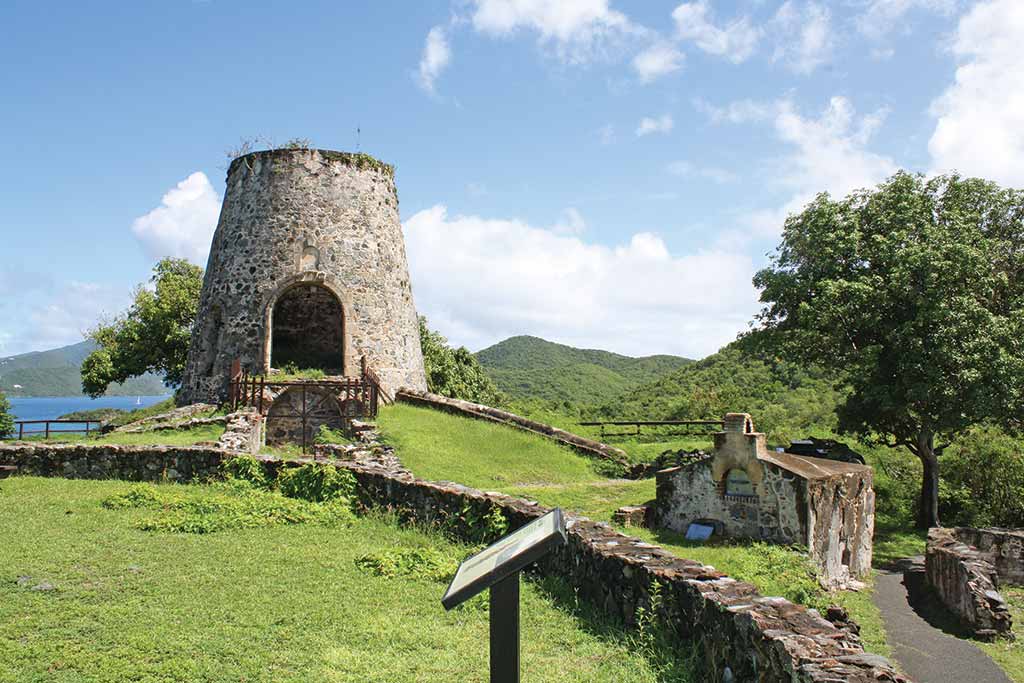The Ruins of Annaberg Sugar Mill on St. John
The ruins of the Annaberg Sugar Mill are the best place to learn about the colonial-era life of both planters and slaves on St. John. The site includes the ruins of a windmill, a sugar factory, a mill round, a rum still, and slave quarters. A 0.25-mile paved trail meanders through the grounds past interpretive signs describing elements of the ruins. There is sometimes a Friends of Virgin Islands National Park volunteer on hand to answer questions about the site and its history.
A nondescript hillside overgrown with dense shrubs near the beginning of the trail was once the site of a sprawling village of 65 slave cabins, mostly wattle and daub huts long lost to time. The slaves of Annaberg labored under a succession of owners from 1721 until 1796, the year that Irish-born James Murphy purchased the estate. At his death in 1808, Murphy was the single largest producer of sugar on the island, with 1,300 acres and 662 enslaved people to his name; Annaberg alone frequently produced more than 100,000 pounds of raw sugar annually.

The windmill at Annaberg, built by slaves with fieldstone, coral, and hand-mixed mortar, was one of five windmills on St. John during the plantation era. The ruins of the windmill, mill round, and boiling house are what remains today of Murphy’s massive sugar operation. Look around and imagine gangs of workers cutting cane on a steeply terraced hillside above. The cut cane would have been loaded on wooden skids and slid down the hill to the factory. Water also flowed downhill; Murphy used slave labor to build a reservoir and elevated aqueduct to complement the 20,000-gallon rainwater cistern that lies alongside the boiling house.
Other structures still standing include a traditional stone oven used to bake large batches of bread and a dungeon outfitted with a post, handcuffs, and chains, evidence of the means used by overseers to control the enslaved population, especially after the 1733 rebellion in which Annaberg slaves took part.
The last European owner of Annaberg was Thomas Letsom Lloyd of Tortola, who sold the plantation to George Francis in 1871. Francis had been born into slavery at Annaberg in the early 1820s. His acquisition of the plantation came at a time when the industry was in steep decline. After Francis died in 1875, his descendants turned to subsistence farming, cattle grazing, and the manufacture of charcoal. The property was purchased for the establishment of the national park in 1954.
The National Park Service organizes cultural demonstrations here three days a week (10am-2pm Tues.-Thurs.) during the tourist season. Annaberg is also a pleasant place just to be; from the crest of the hill you will find views of crystalline Mary Creek, the steep green hillsides of Mary Point, and the bluish mountaintop of Tortola. During the summer, broad flamboyant trees bloom flaming red, and year-round this is a breezy and quiet place to pass time or enjoy a picnic.
